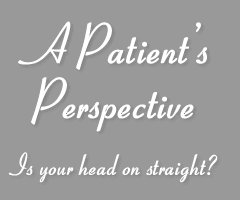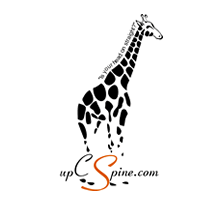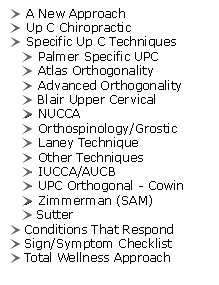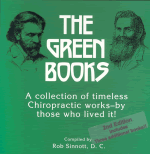

 |
 |
|
Home | A New Approach | Specific Up C Techniques | Palmer Specific UPC PALMER UPPER CERVICAL SPECIFIC – HIO [HOLE-IN-ONE] - B.J. PALMER Find an upper cervical chiropractor at http://www.upper-cervical.com/
Along with this realization Palmer chose a path of scientifically proving his HIO theory and in doing so would alienate many people and even challenge the established principles of chiropractic. He seemed to agree with the medical profession “subluxations … below the inferior [bottom] surface of the Axis [C2] is an impossibility”. The Green Books cite a Dr. Fishbein who states, “Professors of anatomy have dissected thousands of dead bodies and have been unable to find any spinal nerves pinched or compressed in the manner which Chiropractors allege is responsible for disease. The X-ray has been used to search for the dislocations which the Chiropractors assert are present, but those dislocations cannot be found.” It goes on to say “the fundamental dogma of Chiropractic, that disease is caused by dislocations or subluxations of the bones of the spinal column, pressing on nerves, is simply a complete misrepresentation of the demonstrable facts. Any Chiropractor who tells an invalid that he is ill for that reason is either willingly deluding the patient or deluding himself.” Mind you I think that finding compression or traction of a muscular nature would still today, even with the imaging available, be difficult to observe. This is because of the “firmly interlocking articular facets on those vertebrae and their peculiar relationship with the related facets on the contiguous vertebrae.” A Doctor I once met told me that he had witnessed, “large, strong orthopaedic surgeons in white coats who were not able to move vertebrae.” You only have to understand the anatomy to realise that direct compression by misaligned vertebrae would require the vertebrae to be significantly displaced, such displacement being readily viewable on radiological imaging. Looking at the anatomy Palmer concludes, “we chiropractors were
wrong in part when we said that every vertebrae can be subluxated, and
yet we had overlooked this vulnerable point at the top” – a
reference to the occipito-atlanto-axial complex and further “All
pressures here are spinal cord pressures”. In the Spring of 1930 Palmer proclaimed “the principle of HIO, that there could be only one place in the spinal column that a subluxation could exist, and that was at the occipito-atlantal-axial region” and “You never got a sick person well by anything you ever did below the inferior of the Axis.” Needless to say that this would shock the chiropractic world and shake even his most ardent supporters. Today the profession still is in a quandary over this, and I suggest that there is one solution for this – “ALL CHIROPRACTORS MUST LEARN SPECIFIC UPPER CERVICAL”. For those not certain about their manual adjustment capabilities then perhaps instrument adjusting should be considered. Although Palmer would probably have cringed at the suggestion to use instruments, he may not have foreseen the accuracy and downright effectiveness of the instruments of today. The HIO adjustment which Palmer carried out daily in his clinic, whilst targeted specifically to correct upper cervical subluxations also proved that there was an ‘innate’ part to the chiropractic adjustment, with the body making its own adjustments. He used X-rays to show the positioning of the subluxated Atlas before and after adjustment, and states “Atlas is shown to be gradually assuming its normal position in the occipito-atlanto-axial line up, thus showing that some force within the patient is having an influence in the realigning of subluxated vertebrae.” Palmer dedicated the major part of his time since 1930 to establishing the premise of HIO on a scientific basis and upper cervical chiropractors carry on that work today, however these types of chiropractors are unfortunately for us patients far in the minority. He provided evidence of the spinal cord occupying much of the neural canal and showed also that there is a great deal of shrinkage of the spinal cord, shrinking to “80% by the time we could perform the dissections and make the necessary measurements of its size in the neural canal, and 80% of the pressure value you want to show is not there.” There are many thoughts as to the actual causal mechanisms of human disease and illness, but for others and me nothing is more compelling than HIO theory. Whether its spinal cord pressure or pressure on cranial nerves or blood vessels at the skull base, as I suggest, or other contributing factors I think needs to be clarified further. Regardless the upper cervical spine in a sick person should be checked for atlas subluxation first, something which is rarely carried out. The positive health benefits will not be disputed when this is given further consideration and research. Palmer’s work at least deserves that. TOGGLE RECOIL ADJUSTMENT Anyone who has experienced a modern day TOGGLE RECOIL adjustment will tell you that, when delivered correctly this adjustment is very tolerable and very effective.
|
 It’s
now many years since my head injury (1997) and in that time I came to
find out about and to read through the Green Books, which is A COLLECTION
OF CHIROPRACTIC WORKS and absolute essential reading for any person involved
in chiropractic and I would suggest any other medical professional. I
had to shed a tear as I realized that if I had read this earlier on or
investigated ‘specific’ upper cervical chiropractic initially,
then I would not have had to suffer as long as I did and I certainly
would have avoided the needless trauma inflicted upon me during and after
TMJ surgery. The “Scientific Chiropractic; Hole-in-One” Chapters
18 through 20 describe B.J. Palmer coming to a realization that the only
subluxation which really exists are those of the upper cervicals, namely
Atlas and Axis. My thinking after years of research seems so much in
tune with his that I must have met him in a previous life! I also find
that other people who have had similar experiences (i.e. atlas subluxation)
think exactly the same way. Funny thing that, how people who have actually
had the problem understand it so well. There is a message there I suggest!
[Visit
It’s
now many years since my head injury (1997) and in that time I came to
find out about and to read through the Green Books, which is A COLLECTION
OF CHIROPRACTIC WORKS and absolute essential reading for any person involved
in chiropractic and I would suggest any other medical professional. I
had to shed a tear as I realized that if I had read this earlier on or
investigated ‘specific’ upper cervical chiropractic initially,
then I would not have had to suffer as long as I did and I certainly
would have avoided the needless trauma inflicted upon me during and after
TMJ surgery. The “Scientific Chiropractic; Hole-in-One” Chapters
18 through 20 describe B.J. Palmer coming to a realization that the only
subluxation which really exists are those of the upper cervicals, namely
Atlas and Axis. My thinking after years of research seems so much in
tune with his that I must have met him in a previous life! I also find
that other people who have had similar experiences (i.e. atlas subluxation)
think exactly the same way. Funny thing that, how people who have actually
had the problem understand it so well. There is a message there I suggest!
[Visit